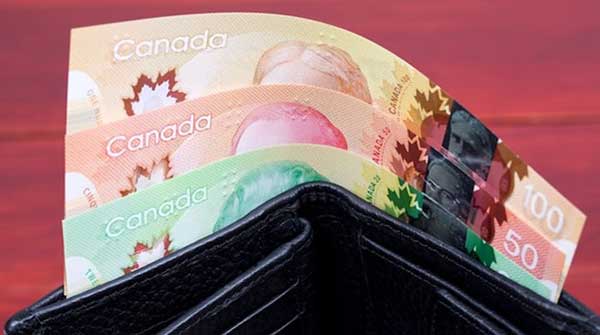
Credit: johan111 via FreePik
Isn’t payday the best day of the month? Your chequing account is suddenly flush with cash, so you can take on bills, get groceries, and finally try out that new sushi place you were eyeing. Before you know it, all that cash is gone, and you have to wait until next payday before you can do anything else.
You might not see anything wrong with this. After all, you’re covering the important things first before you splurge on some sushi. But living paycheque to paycheque means you aren’t setting aside any money for the things in life you don’t expect, like an emergency root canal, a new car battery, or something else entirely unpredictable.
More Than Half of Canadians Live Paycheque to Paycheque
The start of the pandemic marked a challenging period for most people and their finances. A recent survey shows most that Canadians (78%) struggle to keep up with the cost of living. That’s according to the BDO Affordability Index, which surveyed more than 2,000 adults about their financial situation in 2022.
The Index also found 54% of Canadians admit to living paycheque to paycheque, a 3% gain on the previous year. Meanwhile, six in 10 Canadians saved less in 2022 than they did in 2021. Some didn’t save at all.
What Happens if You Don’t Have Savings?
If you’re living paycheque to paycheque, all the money that comes into your hands on payday comes out by the end of the month. Most people living this way need all this cash to cover the necessities; they don’t have any leftovers for unexpected expenses, like unanticipated auto repairs or medical care.
Handling an emergency without savings is possible, but you might have to borrow money to do it. Plenty of people rely on a line of credit when they’re short of what they need for unavoidable repairs or expenses.
So, what is a line of credit in Canada, and what does it cost? A line of credit is a revolving account that lets you borrow up to a pre-set limit as many times as you need as long as you have credit available. Its cost depends on lots of things, including your lender and financial profile.
Take the time to comparison shop before you commit. Researching your options helps you understand the personal line of credit interest rates in Canada.
How Can You Start Saving More Money?
You can put your line of credit on standby by making these changes to your budget:
1. Cut out the Non-Essentials
Use your budget to prioritize the important bills and expenses in your life. Your priorities must include savings for emergencies and retirement. If you can’t sock away any money in savings, look at your spending habits. If you have non-essential splurges, put them on hold.
2. Boost Your Income
Some people living paycheque to paycheque can blame too many shopping sprees for their situation. But most Canadians who struggle with inflation can’t afford these splurges. If you have no non-essentials to cut from your budget, you need to make more money. Think about what you would have to do to get a high-paying position or a part-time job.
3. Control Your Essentials
You may unknowingly spend more than you should on groceries, utilities, and rent. Research how you can limit spending in these areas. Small changes to your habits, like adopting a meal plan and waiting to wash dishes until off-peak hours, may save you money.
If money disappears from one paycheque to the next, follow these tips. They’ll help you set aside more cash in savings.
This content is a joint venture between our publication and our partner. We do not endorse any product or service in the article.

